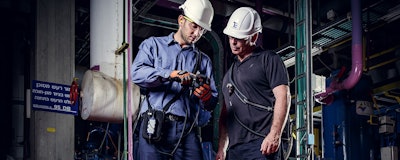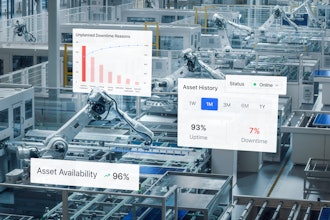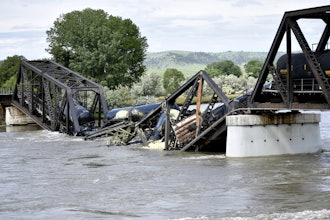
With limited time, scarce resources, and a whole lot of mission-critical maintenance to perform, record-keeping to keep track of parts and materials might be the last thing on anyone’s mind. At first glance, it might seem counterproductive to focus on something so small and administrative when there are so many bigger operations and maintenance issues to deal with.
But here is the brutal truth. The more a business depends on optimizing its available physical assets, and stretches budget and personnel to keep systems running, the greater the need for an efficient, integrated system that delivers the greatest value for every decision, every inspection, and every repair. Getting company records in order is a small investment on the scale of an operations and maintenance (O&M) program, but it produces massive dividends in the form of an optimized system that delivers better results.
Here are nine reasons to pay close, consistent attention to your maintenance record-keeping, and to rely on automated “as service configurations” to aggregate large volumes of data as part of a strategic enterprise asset management (EAM) plan.
- With a massive inventory of equipment, devices, parts, and materials to keep track of, you are lost without an accurate, integrated management system. Modern, tech-enabled companies rely on thousands, even millions of individual tools that must work reliably, and often in concert with each other. Good equipment is built to last, but every item needs routine maintenance and occasional overhaul. Managing work is impossible if managers are not keeping track of the basic physical and human resources you need to get the job done.
- Diagnostic devices can track sub-optimal performance or imminent failures before they are visible to the human eye. Industrial Internet of Things (IIOT) sensors can provide invaluable, real-time operating data on essential equipment. The way to make best use of that avalanche of data is to keep up with it—which means tracking your supplies, anticipating demand, and making sure the right parts are in stock, when and where they are needed.
- Everyone is scrambling to do more with less. In an era of lean budgets, getting more bang for every buck spent on operations and maintenance is not optional. It is a survival strategy that begins with keeping a tight rein on parts and materials, to make sure each item is used to its fullest and replenished on time.
- It is also about personnel. There is no shortage of asset management work on the modern to-do list. The maintenance team needs to wring the best possible results out of every hour on the job. Good record-keeping helps to set priorities—and then, a mobile EAM system gives staff full access to records from the job site, plus the essential ability to update them once a repair is complete.
- Stakeholders want to know. More and more individuals must be accountable for their asset management activities—to customers, executives, external stakeholders, or regulators. Keeping maintenance records up to date in real time is more efficient and vastly more convenient than trying to reconstruct them after falling behind.
- Stay ahead of the curve. More and more asset managers are working to clear their legacy maintenance backlogs, then developing preventive and proactive strategies to anticipate major issues before they occur. None of that is possible without a comprehensive, integrated record of where the entire system of equipment, parts, and materials has been, as a basis for knowing where it needs to go next.
- The urgent should not overtake the important. The most immediate repairs and maintenance activities are not always the ones with the greatest strategic value. An integrated EAM system can factor in equipment histories, performance, and anticipated life cycles to help get ahead of the curve and direct resources where they will do the most good.
- Senior management needs to know. Better record-keeping is the essential cornerstone for senior executives who need a window on a company’s maintenance activities. A modern asset management system aggregates day-to-day work records into smart, layered reporting that is readily available through the company’s enterprise resource planning (ERP) platform. The executive suite gets the information it wants, when and where it is needed. Which makes it less likely that the operations and maintenance team will be diverted from the day’s tasks by a sudden, urgent request for information.
- Big Data can be your secret weapon. The best EAM systems integrate real-time data from multiple devices into predictive performance models and schedules, using “as service configuration” algorithms to streamline tasks and functions that are small, repetitive, and predictable. Whether it is servicing all the vents throughout a major facility or remembering to clear the snow and ice before a participant group arrives at a convention facility, “as service configurations” factor in the countless mundane tasks that can tie down a maintenance planning system—so that managers do not have to.
Asset management has come a long way in a very short time. But the best information technology is only as good as the data it holds. That is why a commitment to effective, relentless record-keeping keeps paying dividends, from the moment you first make the commitment.
Kevin Price is Infor EAM Technical Product Evangelist and Strategist.























